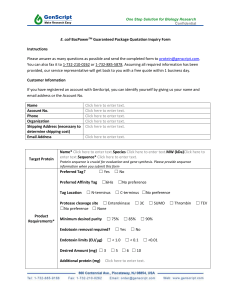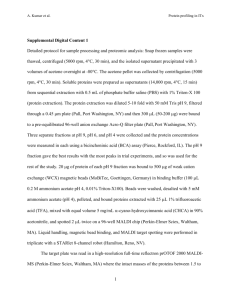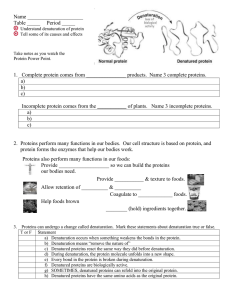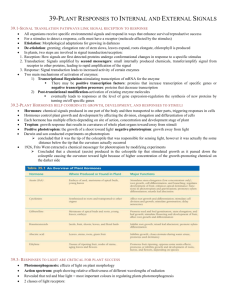연구기법 강의 – protein manipulation
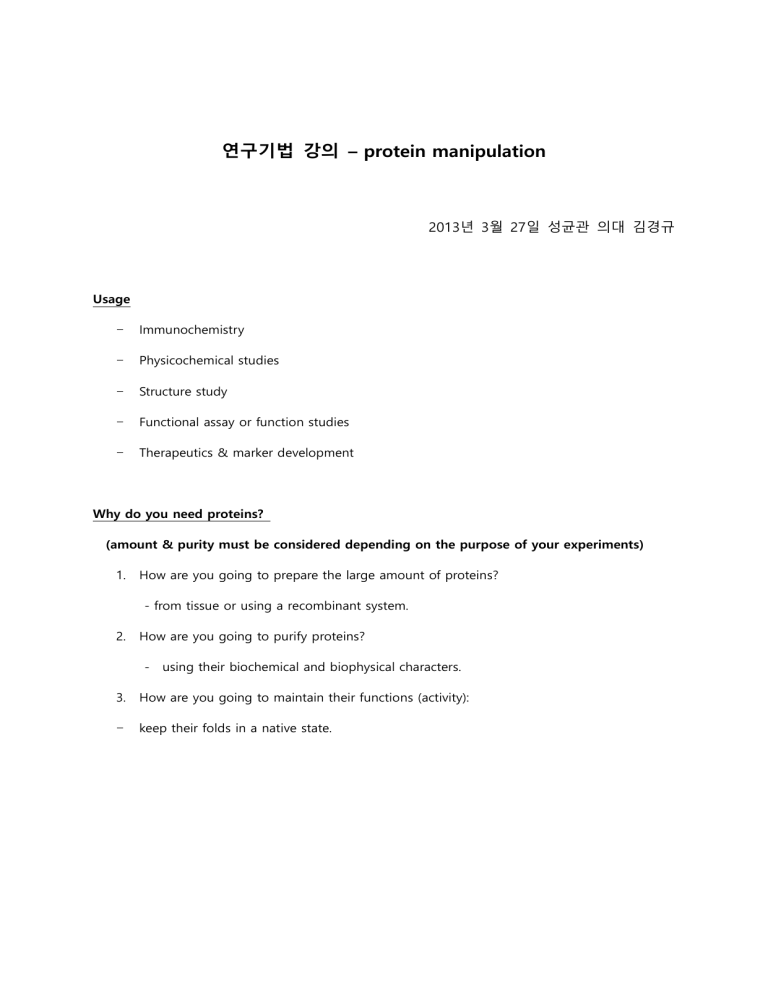
연구기법 강의 – protein manipulation
2013년 3월 27일 성균관 의대 김경규
Usage
Immunochemistry
Physicochemical studies
Structure study
Functional assay or function studies
Therapeutics & marker development
Why do you need proteins?
(amount & purity must be considered depending on the purpose of your experiments)
1.
How are you going to prepare the large amount of proteins?
- from tissue or using a recombinant system.
2.
How are you going to purify proteins?
- using their biochemical and biophysical characters.
3.
How are you going to maintain their functions (activity):
keep their folds in a native state.
What do you need to know?
Protein, what is it?
Structure & folding
Biochemical and biophysical characters
Function : binding & catalytic activity
What factors affect the structure and function of proteins?
Production
Synthesis
Recombinant proteins (bacteria, yeast, insect cells & animal cells)
Endogenous proteins
Heterologous Protein Expression (host, vector)
1.
Bacteria:
E. coli
,
Bacillus
etc (plasmid)
2.
Yeast:
Saccharomyces cerevisiae
,
Pichia pastoris
(plasmid)
3.
Insect cell:
Spodoptera frugiperda
(Sf),
Trichoplusia ni
TN-368 (High 5) (Baculovirus)
4.
Animal cell: CHO cells, 293 cells etc (virus or plasmid)
5.
In vitro translation:
E. coli
extract, wheat germ extract, rabbit recticulocyte (transcription & translation, plasmid)
6.
Plant
Purification
1. Maximize the yield and minimize the cost and time
2. Separate proteins using their physicochemical characters
3. Remove major impurity in the first step
4. Use the most effective method in the first step
5. Use the most expensive method in the last step
6. Maintain your protein in an active state
Handling
1. Principle: keep protein active and stable
2. Factors: contamination, denaturation, preteolytic digestion, chemical modification, adsorption
3. Methods:
- Mild condition (pH, temp. surface) – avoid the denaturation
- Concentration (avoid low and high conc.)
- Stability and degradation
(low temp., protease inhibitor, sodium azide, short exposure to high temp.)
- Stabilizing agent such as glycerol
- Reducing condition
- No freeze & thaw
Storage
1. Principle: maintaining their stability and activity
2. Factors affecting the stability of proteins: temperature ,pH, proteases, microbial contamination, concentration, organic solvents, buffer, salt etc.. (denaturation, cleavage, modification)
3. Practice
(1) Short term storage: keep proteins at low temperature (with protease inhibitors)
(2) Medium term storage: keep proteins at low temperature with sodium azide
(when the protein sample is stored in a buffer) or in water.
(3) Long-term storage: keep proteins in a deep freezer (solution or dried)
- divided into an aliquot
- freeze the sample in the PCR tube using liquid nitrogen (with 20 % glycerol, optional)
- do not thaw and freeze again





